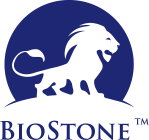AsurDx™ Bluetongue Virus (BTV) Antibody cELISA Test Kit
The AsurDxTM Bluetongue Virus (BTV) Antibodies cELISA Test Kit is designed for the detection of antibodies specific to all serotypes of bluetongue virus (BTV) in cattle, buffalo, goat, sheep or deer serum and plasma samples.

Feature
- Detects antibodies against BTV VP7 protein in cattle, buffalo, goat, sheep or deer serum and plasma;
- Allows specially detect all BTV serotypes as early as 7-15 days post-infection and the test does not detect antibodies against EHDV;
- Procedures last less than 90 minutes and do not need sample pre-dilution step;
- Provides a simple, rapid, sensitive and cost-effective enzyme-based immunoassay (ELISA) screening method
*Availability/Distribution: Product is designed and developed by BioStone US Texas headquarter and manufactured/assembled by BioStone oversea subsidiaries or partners. Currently, the product is only available outside of the USA. Regulatory requirements vary by oversea countries; the product may not be available in your geographic area.
Specification
| Method | Competitive ELISA |
| Coated Antigen | BTV VP7 antigen-coated Plate |
| Incubation Time | 90 minutes |
| Storage | At least 12 months |
| Specificity | antibodies against all BTV serotypes in cattle, buffalo, goat, sheep or deer serum and plasma samples and has no cross-reactivity with EHDV infected animal serum/plasma samples |
Order Information
| Catalog Number | 10049-02 | 10049-05 |
| Plates | 2 plates | 5 plates |
| Reactions | 192 | 480 |
| Plate Format | 12 X 8-well strips | 12 X 8-well strips |
About Disease
BTV is transmitted by the midge Culicoides imicola, Culicoides variipennis, and other culicoids. Bluetongue disease, caused by BTV, is a non-contagious, insect-borne, viral disease of ruminants, mainly sheep and less frequently cattle, goats, buffalo, deer, dromedaries, and antelope. In sheep, BTV causes an acute disease with high morbidity and mortality. Major signs are high fever, excessive salivation, swelling of the face and tongue and cyanosis of the tongue. Swelling of the lips and tongue gives the tongue its typical blue appearance, though this sign is confined to a minority of the animals.
